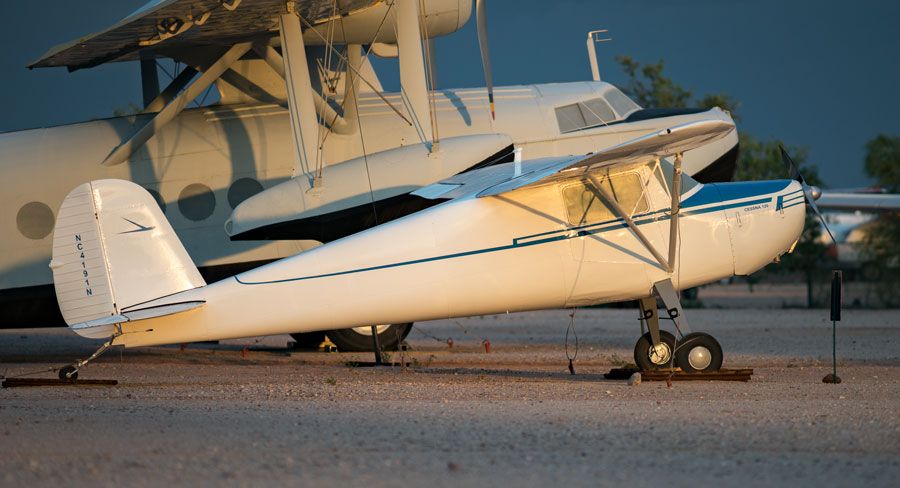Cessna Model 120
The Cessna 120 and 140 were designed at the end of World War II to take advantage of what was hoped would be massive growth in the private pilot training industry. U.S. Government education grants to returning veterans were allowed for pilot training and Cessna hoped to grab much of the flight school market with these two modern, simple, and relatively inexpensive designs. As it turned out both aircraft were very popular, and many pilots received their introduction to flight in the 140 or 120. By August of 1946, Cessna was turning out twenty-two Model 120s and Model 140s a day. Production of the Model 120 ended in 1949 with 2,171 built.
The Model 120 is a simplified version of the Model 140. Differences include the deletion of the wing flaps and rear quarter fuselage windows and a simplified interior. Otherwise the aircraft were virtually identical in construction and appearance. The Model 120 was built with a fabric covered wing which has been replaced with aluminum on the museum’s example.
Wingspan | 32 ft 10 in. |
Length | 21 ft 6 in. |
Height | 6 ft 3 in. |
Weight | 1,450 pounds (loaded) |
Maximum Speed | 123 MPH |
Service Ceiling | 15,500 ft |
Range | 420 miles |
Engine | One Continental C-85-12 piston engine with 85 horsepower |
Crew | 2 |
Manufacturer
AVRO
Markings
Royal Air Force, Number 8 Squadron, RAF Lossiemouth, 1991
Designation
“Mr. McHenry”
Registration
N790WL
Serial Number
WL790
